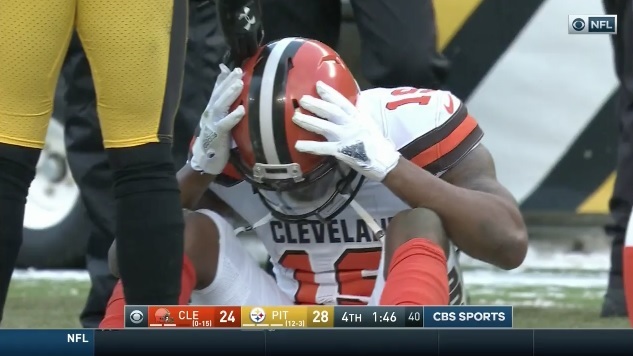 |
Sam Darnold's debut is not the norm for 21 year olds (Jose Juarez / AP).
|
Sam Darnold won his first game in the NFL. What's unusual about that is that he is only 21 years old. Rookies who start their first game before their 22nd birthday are usually terrible. The record for wins that first season is six (Jameis Winston and David Woodley).
The list below is for every QB who had his first start before his 22nd birthday, and shows the QB's won-loss record in that year. There were three QBs who had winning records as a 21 year old rookie: Woodley at 6-5, Jacky Lee at 2-1, and Jack Concannon at 1-0. That's it. The table below shows the won-lost record for the rookie year of every qb who made their first start at age 21. It's pretty grim, so if you are faint of heart, you might not want to look.
The list below is for every QB who had his first start before his 22nd birthday, and shows the QB's won-loss record in that year. There were three QBs who had winning records as a 21 year old rookie: Woodley at 6-5, Jacky Lee at 2-1, and Jack Concannon at 1-0. That's it. The table below shows the won-lost record for the rookie year of every qb who made their first start at age 21. It's pretty grim, so if you are faint of heart, you might not want to look.
These days, players can enter the NFL as underclassmen, so the 21 year old qb is a little more common now. Back in the old days, the only guys who could enter the NFL at age 21 were those who skipped a grade in elementary school or something like that.
Some qbs have won their first game, but not very many. Fran Tarkenton had a fantastic start, throwing four TDs and running for another. But he went 1-8 the rest of the season. The future Hall of Famer had to struggle for a while before his career took off.
Woodley is the outlier, actually having a decent year at 6-5 for a good Dolphins team. Kosar managed to start a playoff game in his rookie year, though the Browns lost it.
Hence Darnold's victorious start is a bit of an anomaly. After emulating his idol Brett Favre by throwing a pick-6 in his very first pass, he settled down and finished 16 for 21 for 198 yards and 2 TDs. Most importantly, the Jets won the game 48-17 over the Lions, who played like kittens.
We'll see how well Darnold does later on. The fact that he simply won a game is impressive in his own right.
The Cleveland Browns have done this experiment three times, with Bernie Kosar, Johnny Manziel and DeShone Kizer. Kosar grew up to be a star, whereas Manziel was out of the league after two tumultuous seasons.
It should be obvious that a 21 year old is too young to base an evaluation on that first year. Going down the list below, several of the 21 year olds went on to become Pro Bowlers and even a Hall of Famer in the case of Tarkenton.
That's why I was down on the decision to start Darnold and very surprised that he won. I would have much rather started Josh McCown until such time as the team falls out of contention, and only then consider starting the rookie.
21 year old quarterbacks are like your little brother. They might grow up and surprise you later on, but for now they are easy to beat up, fall for your tricks and generally not that bright. They might be more formidable in a few years but for now they are usually not that tough.
We'll see how well Darnold does later on. The fact that he simply won a game is impressive in his own right.
The Cleveland Browns have done this experiment three times, with Bernie Kosar, Johnny Manziel and DeShone Kizer. Kosar grew up to be a star, whereas Manziel was out of the league after two tumultuous seasons.
It should be obvious that a 21 year old is too young to base an evaluation on that first year. Going down the list below, several of the 21 year olds went on to become Pro Bowlers and even a Hall of Famer in the case of Tarkenton.
That's why I was down on the decision to start Darnold and very surprised that he won. I would have much rather started Josh McCown until such time as the team falls out of contention, and only then consider starting the rookie.
21 year old quarterbacks are like your little brother. They might grow up and surprise you later on, but for now they are easy to beat up, fall for your tricks and generally not that bright. They might be more formidable in a few years but for now they are usually not that tough.
Rookie W-L Records for 21 year old QBs since 1960.





















/cdn.vox-cdn.com/uploads/chorus_image/image/58524439/843095636.jpg.0.jpg)



